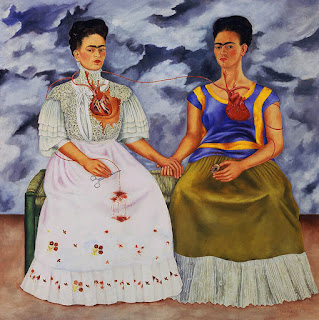Following the end of the war, Cecil Baldwin worked in the Repatriation Department in Hobart where he was the officer in charge of vocational training. He also became active in community associations established for the welfare of ex-servicemen, and became president of the 40th Battalion Association. Objects from Cecil Baldwin's military service and work with returned soldiers are on exhibition at the Tasmanian Museum and Art Gallery.
Cecil married Ruth Maning (1878–1969) in 1918 at St George’s Church, Battery Point.
Front of the house
Many years earlier, when the Arts & Crafts Society of Tasmania was founded in 1903, young Ruth Maning had gone to evening classes to study wood carving. Three of the pieces she created herself - an Art Nouveau bookcase, a blackwood desk carved with gum nuts and a picture frame carved with stylised firewheel tree branches can be seen in Markree's sitting room. Other pieces of furniture came from Ruth’s parents. The furniture is the finest part of the entire home and garden complex.
Furniture made by Ruth Maning Baldwin
Hallway
Dining room
Photo credits: the Markree House Museum and Garden
Some of the objects were not originally from the family. There are ceramics, wooden carved furniture and silverware of the period that have been brought in to the house since eg the 1920s Tasmanian oak and blackwood furniture was made by local cabinet-makers Coogan and Vallance & Co.
There were a few changes over the decades. The Baldwins had a small room added and enclosed the open balcony on the ground floor in the mid 1930s. Son Henry installed new carpets, lights, curtains and wallpaper. However the dining and sitting rooms have been restored to their 1920s decoration through a grant from the Copland Foundation e.g the original 1926 wallpaper, a damask paper with an Art Deco leaf border, has been copied from a surviving panel.
There were a few changes over the decades. The Baldwins had a small room added and enclosed the open balcony on the ground floor in the mid 1930s. Son Henry installed new carpets, lights, curtains and wallpaper. However the dining and sitting rooms have been restored to their 1920s decoration through a grant from the Copland Foundation e.g the original 1926 wallpaper, a damask paper with an Art Deco leaf border, has been copied from a surviving panel.
Their Arts and Crafts garden
Cecil and Ruth Baldwin lived at Markree until their deaths when the property passed to their unmarried son, Henry Baldwin (1919-2007). It was Henry who bequeathed the house, contents and an endowment to the Tasmanian Museum and Art Gallery. This was one of the largest single bequests ever received by an Australian gallery.
Because of its design, location, original condition, history and ability to show the pattern of urban infill that occurred in Hobart in the first half of the C20th, Markree has been provisionally entered in the Tasmanian Heritage Register a couple of years ago and was permanently registered in 2023.
The house and gardens are open Saturdays (Oct-April) from 10am to 4:30pm. On the other days, visitors must pre-book at the Tasmanian Museum & Art Gallery; the guided tours start at 10:30 am and 2:30 pm.
The Baldwin family
Facebook




















